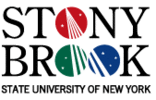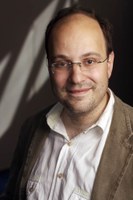
| IEEE International
Conference on Shape Modeling and Applications |
| Stony Brook University, June 4 - 6, 2008 |
News and Updates
Call for Papers
Organization
Important Dates
Paper Submission
Technical Program
Invited Speakers
Best Paper Award
Workshops
Mini-Symposia
Venue
Travel
Hotels
Social Events
Registration
About Stony Brook
Contact Us
Previous Conferences
Sponsors
Other Events
| Mini-Symposia |
|
Mini-Symposium 1: Abstract: In the last years, there has been a renewed interested in spectral analysis applied to meshes, as a powerful technique for shape understanding and with a wide range of interesting applications: from surface parameterization and deformation to compression and retrieval. In particular, Laplacian eigenfunctions, together with their eigenvalues, carry important geometric information about the shape. This minisymposium will offer an insight into open challenges and research results in the field. Topic 1: Bruno Levy. Fourier analysis is a powerful tool in science and engineering,since it enables decomposing a signal into multiple separate frequencies. Besides being applied to periodic functions, it is well known that it can be generalized to other settings. For instance, functions on the sphere can be decomposed onto a basis of spherical harmonics. This function basis is defined to be the eigenfunctions of the Laplace-Beltrami operator. Given this definition, it is possible to compute a spectral function basis on arbitrary manifolds (and we call the so-defined functions "manifold harmonics"). We explain how to compute these manifold harmonics and show some applications in geometric signal processing. Topic 2: Richard Zhang. I would like to talk about results related to the eigenfunctions of the Laplacian and of more general operators. There are some results from different geometry that are worth exploring. One practical problem is to resolve the eigenvector ordering problem. Topic 3: Martin Reuter. High Order Laplace-Beltrami Computations for Non-Rigid Shape Analysis and Processing. Abstract: The use of spectra of the Laplace-Beltrami Operator for non-rigid shape retrieval is discussed at the example of two shape databases with classes of near-isometric shapes. It will be shown that high order computations based on cubic FEM are capable of obtaining accurate results even for non-manifold meshes. Cubic FEM are of great advantage also for the computation of eigenfunctions particularly on non uniform meshes. Accurate eigenfunctions are of interest in many mesh processing applications such as registration. Topic 4: Giuseppe Patane. Laplacian eigenfunctions for shape analysis. Abstract: In digital geometry processing and shape modeling, harmonic functions and Laplacian eigenfunctions have been used in several applications, which range from surface parameterization, deformation, and compression to segmentation, clustering, and comparison. This talk analyzes the differential properties (e.g., smoothness, critical points) of the eigenfunctions and the numerical aspects behind mesh Laplacian operators. 3D Shape modeling techniques for the analysis of scalar functions and the perturbation theory related to the eigenvalue problem are expolited to discuss the role of Laplacian eigenfunctions for shape analysis and description.
Mini-Symposium 2: Abstract: Modern geometry and topology lay down the theoretic foundation for shape modeling; the increasing computational power and the development of effecient geometric processing algorithms help the research in pure mathematics. The breakthroughs in 3-manifold topology introduce powerful geometric processing tools, such as curvature flow, geometric structures, which have been applied for shape modeling and manifold splines. The advances of 3D scanning technology raises the challenge to convert classical differential geometry to the discrete settings. Designing algorithms for discrete manifolds will play vital role in the future study of low dimensional manifolds. This symposium covers advances in both engineering fields and pure mathematics, and their interactions.
Biographies (Symposium Coordinator) Dr. Michela Spagnuolo is currently Senior Researcher at IMATI-CNR. She authored more than 100 reviewed papers in scientific journals and international conferences, edited a book on 3D shape analysis, and was guest-editor of several special issues. She is currently programme chair of the EG workshop on 3D Object Retrieval and of IEEE Shape Modeling International 2008 (SMI). She is a member of the steering committee of SMI, and was programme chair for the Semantic and digital Media Technology, SAMT. Her current interests include shape analysis techniques, shape similarity and matching, and computational topology. She is in charge of the research unit on Advanced techniques for the analysis and synthesis of multidimensional media. TopBruno Levy is a researcher with INRIA. He is the head of the ALICE research group. He did a Ph.D. (1996-1999) with J.-L. Mallet, on 3D modeling for oil exploration, in the INPL (Nancy, France). His Ph.D. thesis was awarded the SPECIF price in 2000 (best French Ph.D. thesis in Computer Sciences). He then did a post-doc in Stanford university, in the SCCM group (headed by G. Golub) where he learnt numerical optimization, and in the earth sciences group (headed by A. Journel and K. Aziz) where he learned finite element modeling. He has served on various program committes, including Siggraph, Eurographics, Visualization and the Symposium on Geometry Processing. He was program co-chair of the ACM Symposium on Solid and Physical Modeling in 2007 and 2008. His main contributions concern texture mapping and parameterization methods for triangulated surfaces, that are now used by several popular 3D modeling software (including Maya, Catia, Silo, Blender and Gocad). TopRichard Zhang co-directs the Graphics, Usability, and Visualization Lab Mat Simon Fraser University, Canada, where he has been an assistant professor in the School of Computing Science since 2002. He received his Ph.D. in computer science from the University of Toronto in 2003 and M.Math. and B.Math. degrees from the University of Waterloo in 1997 and 1995, respectively. His research interests are in the areas of geometry processing and computer graphics. Current topics of interests include spectral mesh processing, shape correspondence, parallel coordinates visualization, and remeshing. TopDr. Reuter is a Feodor-Lynen Fellow of the Humboldt Foundation and works as a postdoc at MIT, Department of Mechanical Engineering since Sept. 2006. He has been awarded a prize for outstanding scientific accomplishments in 2006 at the Leibniz University Hannover where he obtained his Ph.D. in 2005 in the area of shape recognition from the faculty of electrical engineering and computer science with summa cum laude. Before that he obtained his Diplom (M.Sc.) in mathematics with a second major in computer science and a minor in business information technology from the Leibniz University of Hannover in 2001. His research interests include computational geometry and topology, computer aided design, geometric modeling and computer graphics. TopGiuseppe Patane is a researcher at IMATI-GE. He received a Ph.D. in Mathematics and Applications from the University of Genova in 2005, aPost-Lauream Degree Master in "Applications of Mathematics to Industry" from the "F. Severi National Institute for Advanced Math ematics", Department of Mathematics and Applications - University of Milan (2000), and an Advanced Laurea Degree in Mathematics from the University of Genova (1999). His research interests include numerical analysis (implicit surfaces), shape analysis, computational geometry (topological graphs, local and global parameterization). TopDr. Jorg Peters is Professor of Computer and Information Sciences at University of Florida. He is interested in representing, analyzing and computing with geometry. To this end he has developed new tools for free-form modeling and design in spline, Bezier, subdivision and implicit representations. Dr. Peters obtained his Ph.D. in 1990 in Computer Sciences from the University of Wisconsin, Carl de Boor advisor. In 1991 and 1992, Dr Peters held positions at the IBM T. J. Watson Research Center and Rensselaer Polytechnic Institute before moving to the computer science department of Purdue University. In 1994, Dr. Peters received a National Young Investigator Award. He was tenured at Purdue University in 1997 and moved to the University of Florida in 1998 where he became full professor. Dr. Peters serves as associate editor for the journal CAGD, APNUM and ACM ToG and on program committees (see http://www.cise.ufl.edu/~jorg). His students have built such useful tools as BezierView and TIPS. TopFeng Luo received his Ph. D. from University of California at San Diego in 1989. He is a professor of Mathematics at Rutgers University. His research interests include geometry and topology of surfaces and 3-manifolds, and computer graphics. For more information, see http://www.math.rutgers.edu/~fluo. TopGabriel Taubin earned a Licenciado en Ciencias Matematicas degree from the University of Buenos Aires, Argentina in 1981, and a Ph.D. degree in Electrical Engineering from Brown University in 1991. He was named IEEE Fellow for his contributions to the development of Three-Dimensional Geometry Compression Technology and Multimedia Standards, won the Eurographics 2002 Günter Enderle Best Paper Award, and was named IBM Master Inventor. Dr. Taubin is author of 70 reviewed book chapters, journal papers or conference papers, and co-inventor of 48 international patents. Before joining Brown University in the Fall of 2003, he was a Research Staff Member and Manager of the Visual and Geometric Computing group at the IBM T. J. Watson Research Center, which he joined in 1990. During the 2000-2001 academic year he was Visiting Professor of Electrical Engineering at CalTech. His main line of research has been related to the development of efficient, simple, and mathematically sound algorithms to operate on 3D objects represented as polygonal meshes or point clouds. The 3D geometry compression technology that he developed at IBM is part of the MPEG-4 standard and was incorporated in IBM products. Top(Symposium Coordinator) David Gu received the PhD in computer science from Harvard University in 2003. He is an assistant professor of computer science at Stony Brook University. He won the US National Science Foundation CAREER award in 2004. His research interests are computer graphics, computer vision, and medical imaging. His major works include geometry images, global conformal surface parameterization, manifold splines, discrete Ricci flow and computational conformal geometry. For more information, see http://www.cs.sunysb.edu/~gu. Top
Home |
News and Updates |
Call for Papers
|
Organization
|
Important Dates
|
Paper Submission Technical Program | Invited Speakers | Best Paper Award | Workshops | Mini-Symposia Venue | Travel | Hotels | Social Events | Registration | About Stony Brook | Contact Us Previous Conferences | Sponsors | Other Events Page maintained by webadmin |









